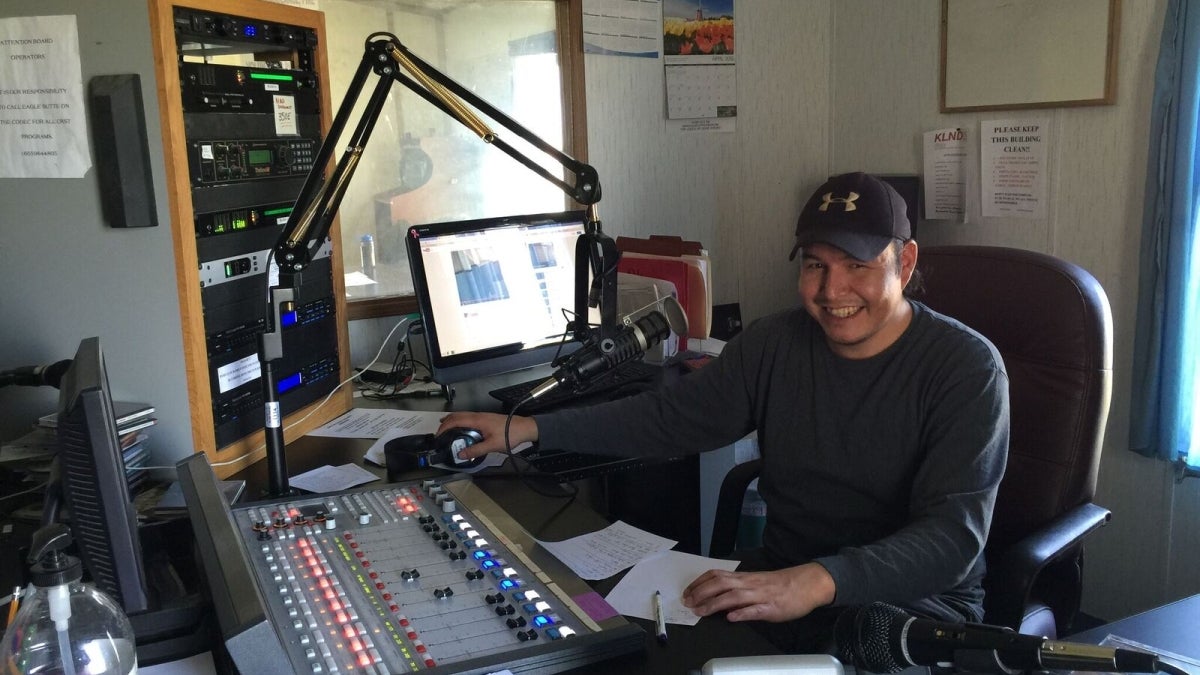Native American radio summit empowers station owners, prospects

Loris Taylor knows firsthand how tough it can be to run a radio station in Indian Country.
When she first took over KUYI 88.1 FM on the Hopi reservation in northern Arizona in 2000, she had no support system and at one point made an engineer sketch equipment diagrams on an office chalkboard so she could see how everything fit together.
It was a bad signal for Taylor and others who say radio transmissions are vital in rural areas with limited access to newspapers, local TV and consistent internet service. “I literally knew nothing, and I was the general manager,” Taylor said. “There was no learning curve for me because everything was a straight vertical line.”
But now, thanks in part to efforts from Taylor, who left the station 11 years ago to help start the diversity advocacy group Native Public Media, the task isn’t as daunting and radio is a growing platform on reservations across the U.S.
Taylor’s group aims to improve and expand existing Native-owned and -operated radio stations and to increase the number and reach of such stations. Native Public Media — along with Arizona State University’s American Indian Policy Institute, the Federal Communications Commission’s Office of Native Affairs and Policy, and the National Federation of Community Broadcasters — is hosting a three-day summit starting July 19 at the Walter Cronkite School of Journalism and Mass Communication in downtown Phoenix. Organizers plan to give Native American broadcasters an overview of radio station management, operation requirements, federal regulations, programming, funding and engineering.
“Tribal radio is a lifeline on tribal reservations,” said Traci Morris, American Indian Policy Institute director. She said the conference will provide a needed boost and that “the Cronkite School is the perfect place for Native radio and media professionals to assemble and to consult with the FCC.”

Loris Taylor, president and CEO of Native Public Media, has made it her mission to expand access to local radio on Indian reservations across the U.S.
Tribes have been lobbying the federal agency to grant more broadcast licenses to Native owners on tribal lands. Since 2007, the FCC has approved dozens of new stations in Indian Country. In 2010, the agency adopted a “tribal priority” rule to make it easier for Native owners to obtain radio licenses. The agency’s former Native affairs liaison, Geoffrey C. Blackwell, who also will attend the summit, said in a 2013 statement that the rule is intended to help “provide radio service tailored to specific tribal needs and cultures” and foster “localism and diversity of ownership.”
There are more than 560 federally recognized tribes across the U.S. comprising more than 4 million people. Including the recent growth, advocates say there are currently 58 Indian radio stations and about 20 more headed toward approval. The expansion is promising, but not enough, they say.
“Most of Indian Country is still dark,” Taylor said. “We’re just not wired.”
Summit attendees will hear from FCC Commissioner Mignon L. Clyburn, who organizers say has become known as an advocate for media diversity. Clyburn didn’t return an email seeking comment for this story, but she is scheduled to speak Wednesday.
For Taylor, the conference marks a significant moment, but it by no means signals that her work is over. With more stations on tribal lands, people will be better informed about government, public safety and other issues that affect their communities, she said. Native people also will be able to turn back negative stereotypes by telling their own stories, even in remote areas, she said.
“Radio is a technology that serves Indian Country well,” Taylor said, “because all it requires is a small appliance in the household.”
Top photo: Producer Justin Miller of KLND 89.5 FM in McLaughlin, South Dakota, takes a seat behind the microphone.